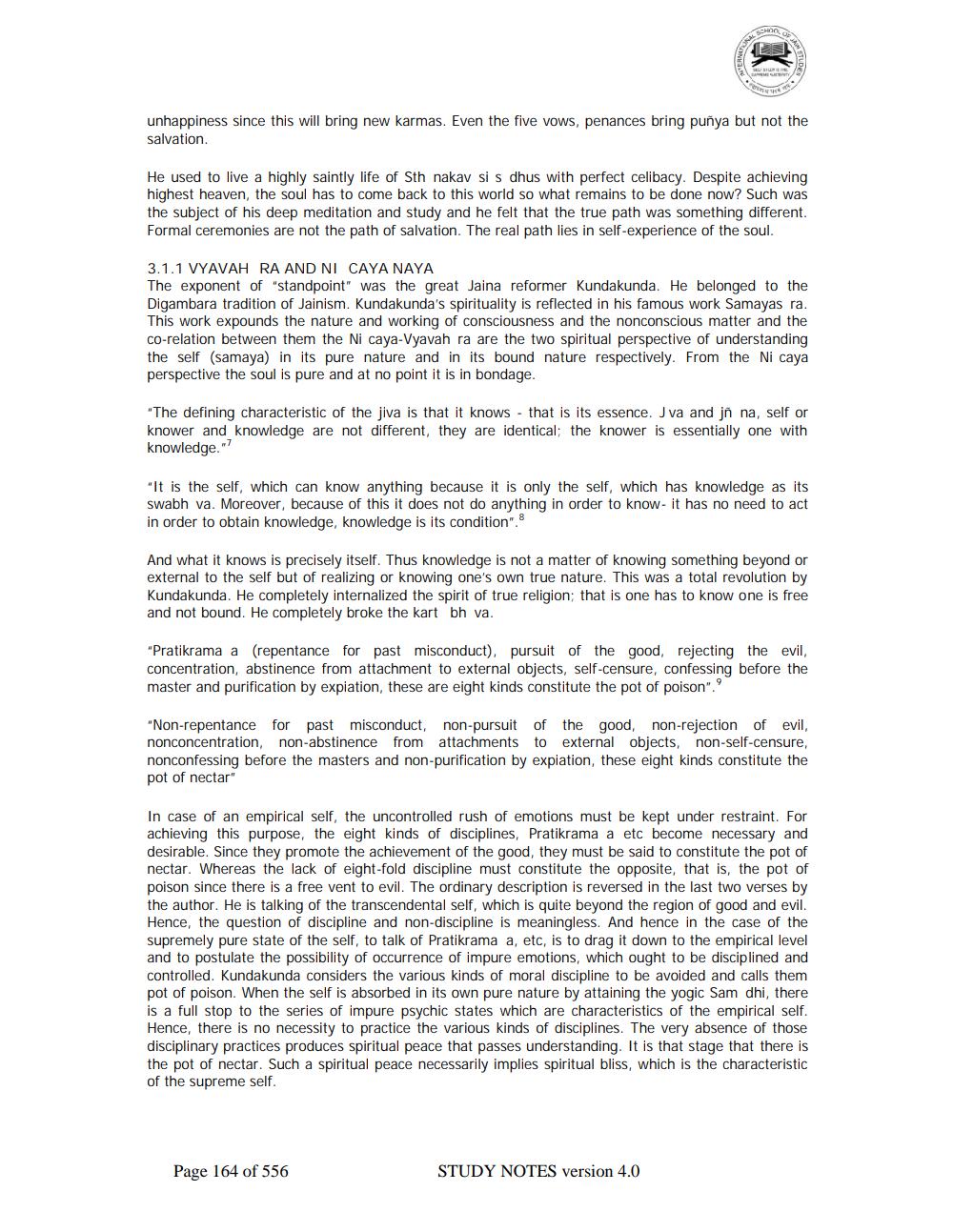________________
unhappiness since this will bring new karmas. Even the five vows, penances bring punya but not the salvation.
He used to live a highly saintly life of Sth nakav si s dhus with perfect celibacy. Despite achieving highest heaven, the soul has to come back to this world so what remains to be done now? Such was the subject of his deep meditation and study and he felt that the true path was something different. Formal ceremonies are not the path of salvation. The real path lies in self-experience of the soul.
3.1.1 VYAVAH RA AND NI CAYA NAYA The exponent of "standpoint" was the great Jaina reformer Kundakunda. He belonged to the Digambara tradition of Jainism. Kundakunda's spirituality is reflected in his famous work Samayas ra. This work expounds the nature and working of consciousness and the nonconscious matter and the co-relation between them the Ni caya-Vyavah ra are the two spiritual perspective of understanding the self (samaya) in its pure nature and in its bound nature respectively. From the Ni caya perspective the soul is pure and at no point it is in bondage.
"The defining characteristic of the jiva is that it knows - that is its essence. J va and jn na, self or knower and knowledge are not different, they are identical; the knower is essentially one with knowledge."
"It is the self, which can know anything because it is only the self, which has knowledge as its swabh va. Moreover, because of this it does not do anything in order to know - it has no need to act in order to obtain knowledge, knowledge is its condition".
And what it knows is precisely itself. Thus knowledge is not a matter of knowing something beyond or external to the self but of realizing or knowing one's own true nature. This was a total revolution by Kundakunda. He completely internalized the spirit of true religion; that is one has to know one is free and not bound. He completely broke the kart bh va.
"Pratikrama a (repentance for past misconduct), pursuit of the good, rejecting the evil, concentration, abstinence from attachment to external objects, self-censure, confessing before the master and purification by expiation, these are eight kinds constitute the pot of poison".
"Non-repentance for past misconduct non-pursuit of the good, non-rejection of evil, nonconcentration, non-abstinence from attachments to external objects, non-self-censure, nonconfessing before the masters and non-purification by expiation, these eight kinds constitute the pot of nectar"
In case of an empirical self, the uncontrolled rush of emotions must be kept under restraint. For achieving this purpose, the eight kinds of disciplines, Pratikrama a etc become necessary and desirable. Since they promote the achievement of the good, they must be said to constitute the pot of nectar. Whereas the lack of eight-fold discipline must constitute the opposite, that is, the pot of poison since there is a free vent to evil. The ordinary description is reversed in the last two verses by the author. He is talking of the transcendental self, which is quite beyond the region of good and evil. Hence, the question of discipline and non-discipline is meaningless. And hence in the case of the supremely pure state of the self, to talk of Pratikrama a, etc, is to drag it down to the empirical level and to postulate the possibility of occurrence of impure emotions, which ought to be disciplined and controlled. Kundakunda considers the various kinds of moral discipline to be avoided and calls them pot of poison. When the self is absorbed in its own pure nature by attaining the yogic Sam dhi, there is a full stop to the series of impure psychic states which are characteristics of the empirical self. Hence, there is no necessity to practice the various kinds of disciplines. The very absence of those disciplinary practices produces spiritual peace that passes understanding. It is that stage that there is the pot of nectar. Such a spiritual peace necessarily implies spiritual bliss, which is the characteristic of the supreme self.
Page 164 of 556
STUDY NOTES version 4.0




